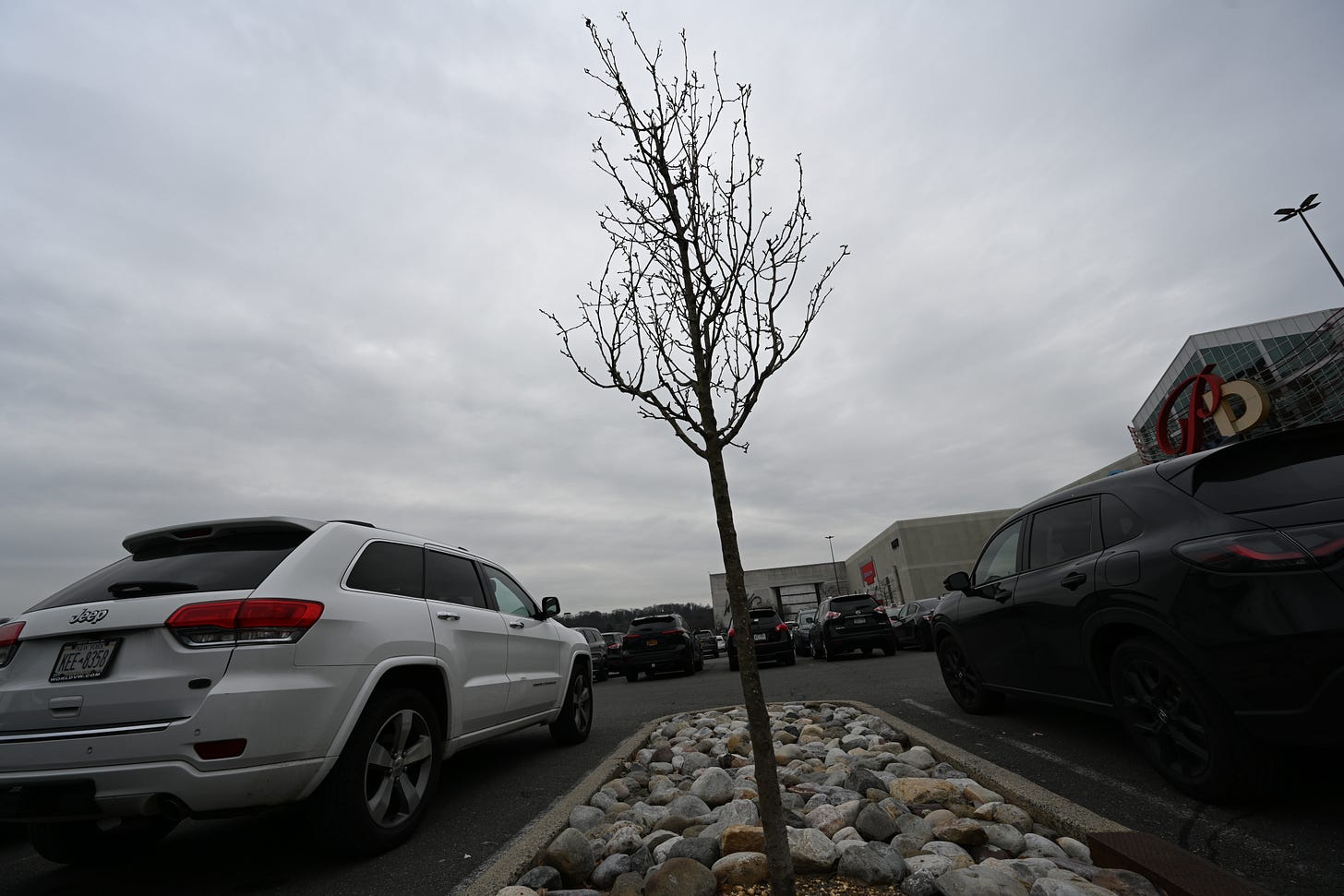Since we were visiting some family before the holidays (and wanted to escape the madness of New York City malls this time of year), John and I decided to do some of our Christmas shopping in the Palisades Center mall.
In the mall’s parking lot, I noticed this tree. It was right in the middle, in a little concrete-enclosed island all to itself, covered by decorative rocks. It was probably a young tree. It was short and thin—probably only a few years old. It was the only tree in the parking lot, and it caught my eye. All of a sudden, I was overcome by what a profound injustice this tree’s very existence actually was.
I imagined it looking out at the mountains nearby, a bustling community of brothers so close, yet completely out of reach. It’s not like it could dig itself out of the ground and tiptoe on its little roots to meet them. The tree ‘grew up’ in the mountains, but it may as well have been in the center of Brooklyn. The poor little guy was all alone.
I’ve read that trees do better when they’re part of forests.1 They are able to communicate with other trees when they are connected at the roots, and this helps them prosper and live longer. I bet it’s because the forest trees are happier. Trees that are grown in isolation don’t live nearly as long, and the ones in manmade forests don’t fare much better.
So here’s a prayer for a lonely little tree, whose sad, sordid fate stemmed from the desire to ‘beautify’ a corporate cesspool.
To a mall parking lot dweller, the life of a tree is hardly considered a life at all.
But we noticed you.
The Hidden Life of Trees by Peter Wohlleben is a great book on this subject.





